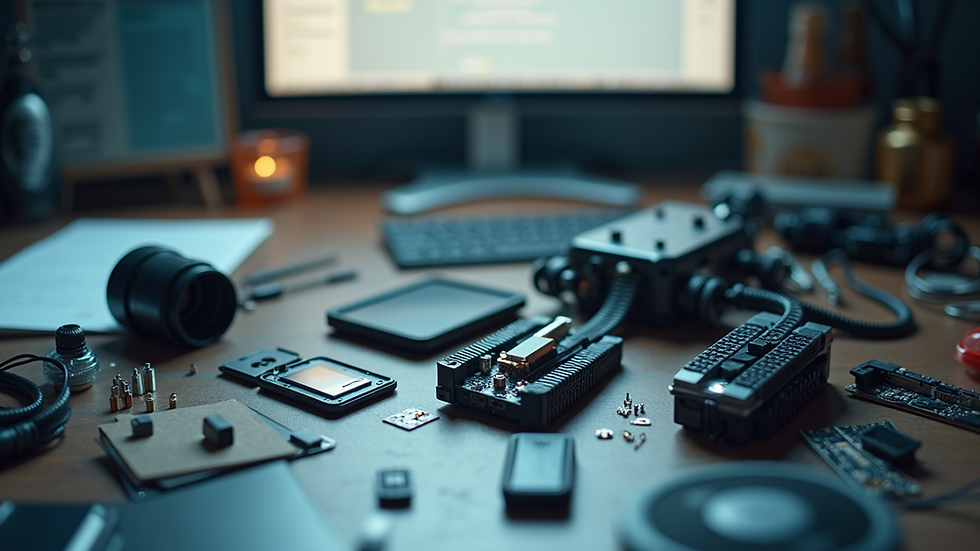Boosting STEM Education with School Supplies
- Samantha Peers

- Sep 29
- 4 min read
STEM education is transforming how students learn and prepare for the future. Science, Technology, Engineering, and Mathematics are critical fields that require hands-on experience and practical learning. One of the most effective ways to enhance STEM education is by equipping classrooms with the right supplies. These tools not only engage students but also foster creativity, problem-solving, and critical thinking skills.
The Importance of STEM Classroom Essentials
STEM classroom essentials are more than just tools; they are gateways to discovery. When students have access to quality materials, they can experiment, build, and explore concepts in a tangible way. This hands-on approach helps solidify abstract ideas and makes learning more enjoyable.
For example, simple items like measuring tools, circuit kits, and robotics sets allow students to apply theoretical knowledge practically. This approach encourages curiosity and motivates students to pursue STEM careers.
Key benefits of having STEM classroom essentials include:
Enhancing student engagement through interactive learning
Developing critical thinking and problem-solving skills
Encouraging collaboration and teamwork
Preparing students for real-world challenges

Choosing the Right STEM Supplies for Schools
Selecting the right supplies is crucial for maximizing the impact of STEM education. Schools should consider age-appropriate kits and tools that align with their curriculum goals. For younger students, simple building blocks and basic science kits work well. Older students benefit from more complex robotics kits, coding tools, and engineering sets.
When shopping for supplies, look for items that are durable, reusable, and versatile. This ensures that the materials can be used across multiple lessons and grade levels. Additionally, incorporating digital tools like tablets and software can complement physical kits and expand learning opportunities.
One excellent resource for finding quality materials is stem supplies for schools. This site offers a curated list of the best kits and tools designed specifically for educational settings.
Tips for selecting STEM supplies:
Match supplies to curriculum standards and learning objectives
Prioritize hands-on kits that encourage experimentation
Choose materials that support collaboration and group projects
Consider the longevity and adaptability of the supplies

Integrating STEM Supplies into Daily Lessons
Having the right supplies is only part of the equation. Teachers need to integrate these tools effectively into their daily lessons to maximize learning outcomes. This can be done by designing projects and activities that require students to use the supplies creatively.
For instance, a lesson on electricity can include building simple circuits using wires, batteries, and bulbs. A math class might incorporate measuring tools and geometry kits to explore shapes and dimensions practically. By linking supplies directly to lesson objectives, students see the relevance of what they are learning.
Strategies for effective integration:
Plan hands-on activities that align with lesson goals
Encourage students to work in teams to solve problems
Use supplies to demonstrate real-world applications
Allow time for experimentation and reflection

Encouraging Creativity and Innovation Through STEM
STEM education is not just about following instructions; it’s about fostering creativity and innovation. The right supplies can inspire students to think outside the box and develop unique solutions to problems.
For example, engineering kits that allow students to build bridges or vehicles encourage them to test different designs and materials. Coding kits enable students to create their own games or apps, promoting logical thinking and creativity. These experiences build confidence and a growth mindset.
Ways to promote creativity with STEM supplies:
Provide open-ended projects with multiple solutions
Encourage students to ask questions and experiment
Celebrate innovative ideas and creative problem-solving
Incorporate design challenges and competitions
Supporting Teachers with STEM Resources
Teachers play a vital role in the success of STEM education. Providing them with the right resources and training is essential. Professional development workshops, lesson plans, and access to quality supplies empower teachers to deliver engaging STEM lessons.
Schools should invest in ongoing support for educators to keep them updated on the latest STEM trends and tools. Collaboration among teachers can also lead to sharing best practices and innovative teaching methods.
Recommendations for supporting teachers:
Offer regular STEM training sessions and workshops
Provide access to curated STEM lesson plans and activities
Create a resource library with supplies and instructional materials
Encourage peer collaboration and mentorship programs
Building a Future-Ready Classroom Environment
Creating a future-ready classroom means more than just having supplies; it involves cultivating an environment where students feel inspired to explore and innovate. This includes flexible seating, accessible storage for supplies, and technology integration.
A well-organized STEM classroom encourages independence and responsibility. Students learn to manage materials, work collaboratively, and take ownership of their learning. This environment prepares them for higher education and careers in STEM fields.
Key elements of a future-ready STEM classroom:
Flexible and adaptable learning spaces
Easy access to STEM supplies and technology
Opportunities for collaborative and individual work
A culture that values curiosity and experimentation
By investing in the right tools and creating supportive environments, schools can significantly boost STEM education outcomes. The journey to inspire the next generation of innovators starts with equipping classrooms with the essentials they need to succeed.












Comments